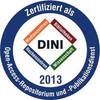Preview |
PDF, English
- main document
Download (9MB) | Terms of use |
Abstract
Recent high-throughput microscopy advancements have made it possible to perform multiplexed time-lapse imaging in a single experimental run. However, despite these technological improvements, a major gap remains in the practical application and optimization of multiplexed time-lapse imaging for studying dynamic biological processes in vivo. This is particularly evident when quantifying complex dynamic phenotypes, such as regeneration and cell migration, in small model organisms like zebrafish. Challenges in sample preparation, spatiotemporal sampling, and the lack of dedicated imaging protocols and bioimage analysis tools aggravate this problem. Zebrafish, with their genetic accessibility and optical transparency, provide an excellent model for live imaging and high-content screening. However, it lacks dedicated protocols and solutions to multiplexed time-lapse imaging screening experiments, hindering it from fully exploiting its potential. To address these challenges and bridge this gap, I established a benchmark high-throughput screening platform for quantifying kidney regeneration in zebrafish embryos post-laser-induced injury. This platform integrates multiple components, optimized sample mounting strategies to ensure optimal imaging conditions over extended periods, a high-throughput laser-induced injury workflow, and a smart imaging framework that seamlessly integrates lasering and imaging to capture regenerating renal tubules efficiently. This followed a dedicated image processing pipeline that allows the detection and tracking of regenerating tissues. Utilizing open-source tools such as Fiji, Python, and KNIME, I built analysis workflows capable of stabilizing images, segmenting key regions of interest, and quantitatively assessing regeneration dynamics across hundreds of embryos. Finally, the platform was validated through experiments under different environmental conditions to verify the platform’s ability to assess regeneration efficiency and variability at an unprecedented scale. In conclusion, using the established high-throughput platform, I set a new benchmark for multiplexed time-lapse imaging in zebrafish-based screening. The platform's protocol components and flexible analysis workflows can be applied to other dynamic phenotypes. Ultimately, through this thesis, I present a comprehensive methodology and versatile tools for long-term imaging and set a precedent for investigating dynamic phenomena across biology.
| Document type: | Dissertation |
|---|---|
| Supervisor: | Gehrig, Dr. Jochen |
| Place of Publication: | Heidelberg |
| Date of thesis defense: | 3 July 2025 |
| Date Deposited: | 29 Jul 2025 14:19 |
| Date: | 2025 |
| Faculties / Institutes: | The Faculty of Bio Sciences > Dean's Office of the Faculty of Bio Sciences |
| DDC-classification: | 004 Data processing Computer science 500 Natural sciences and mathematics 590 Zoological sciences 600 Technology (Applied sciences) |









